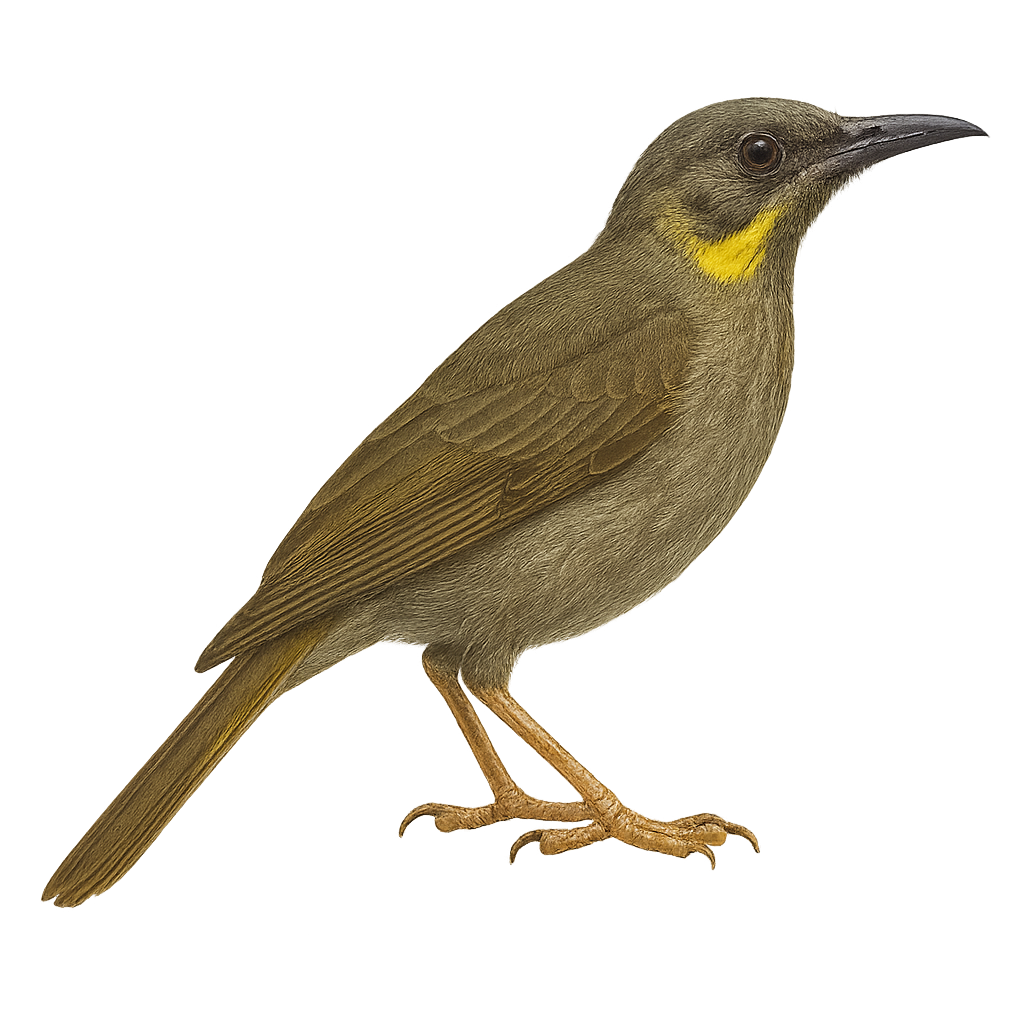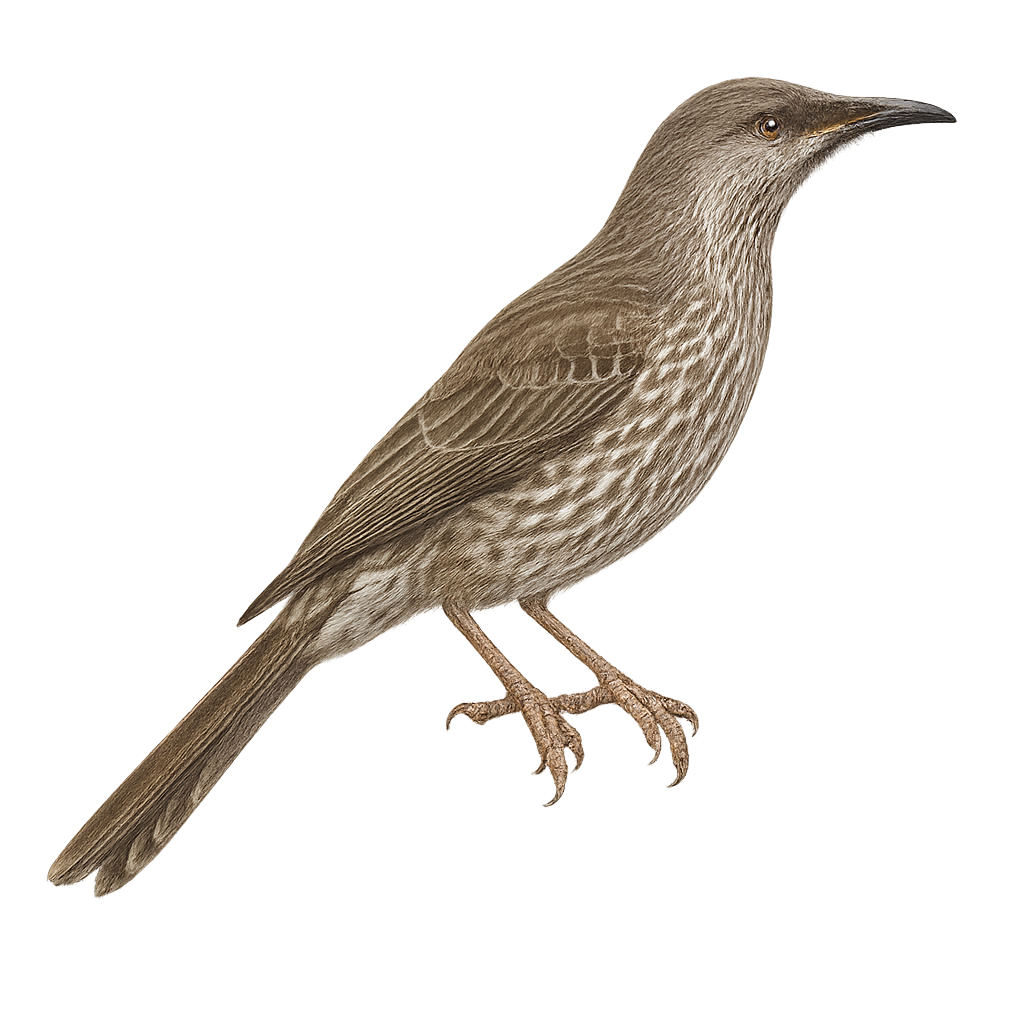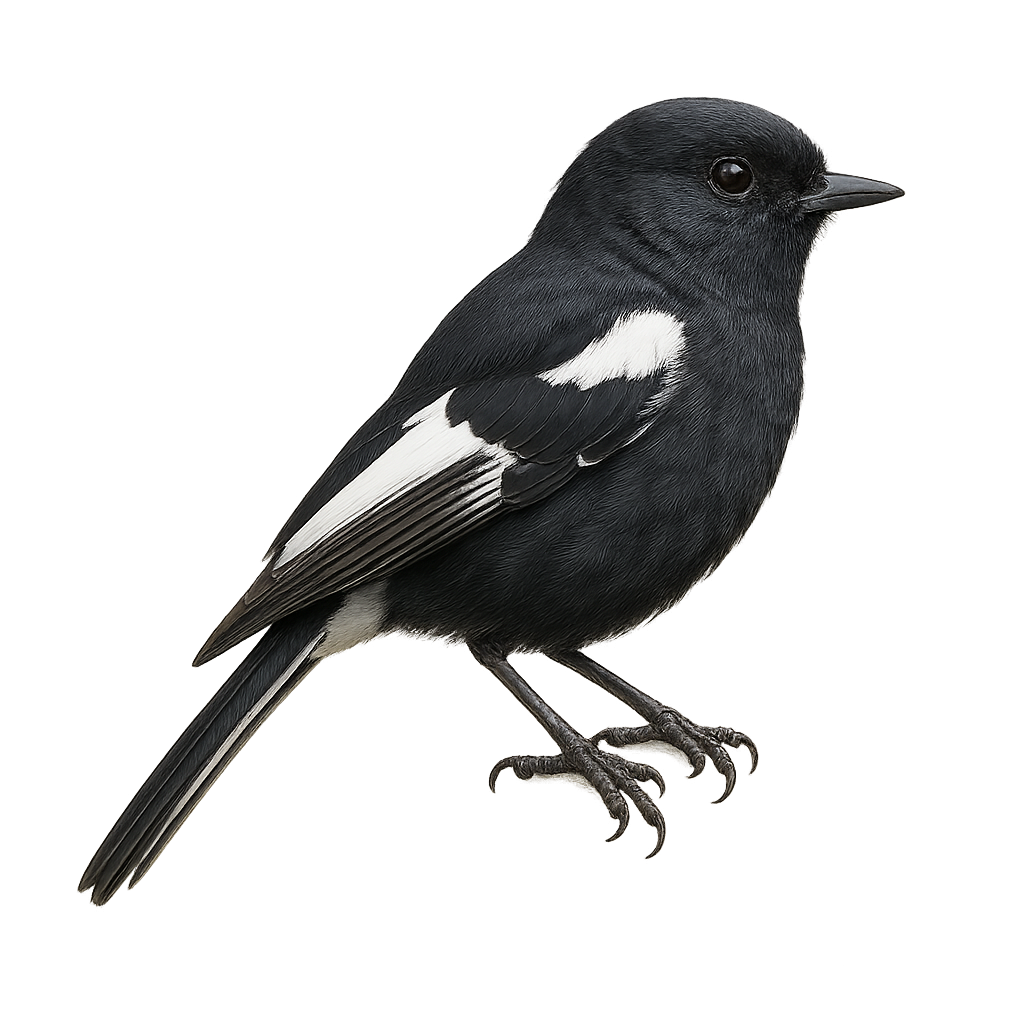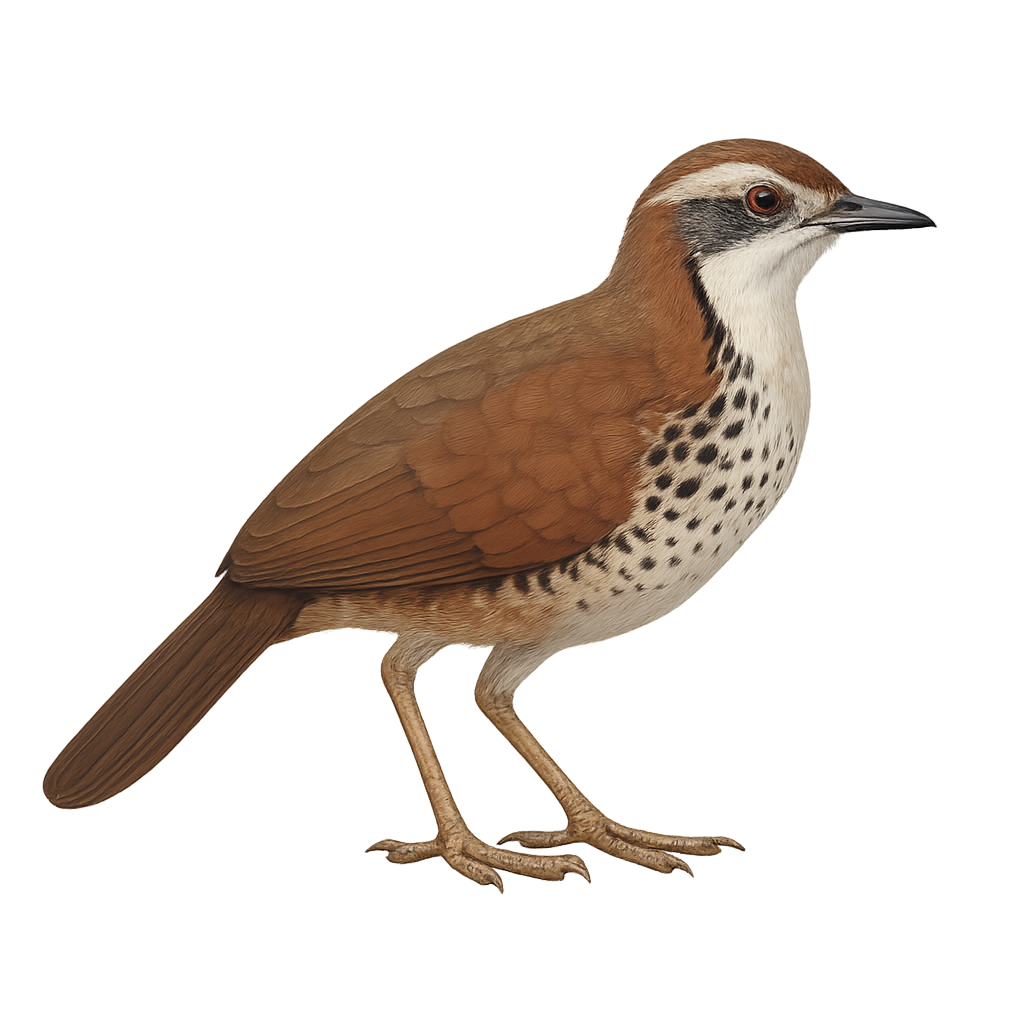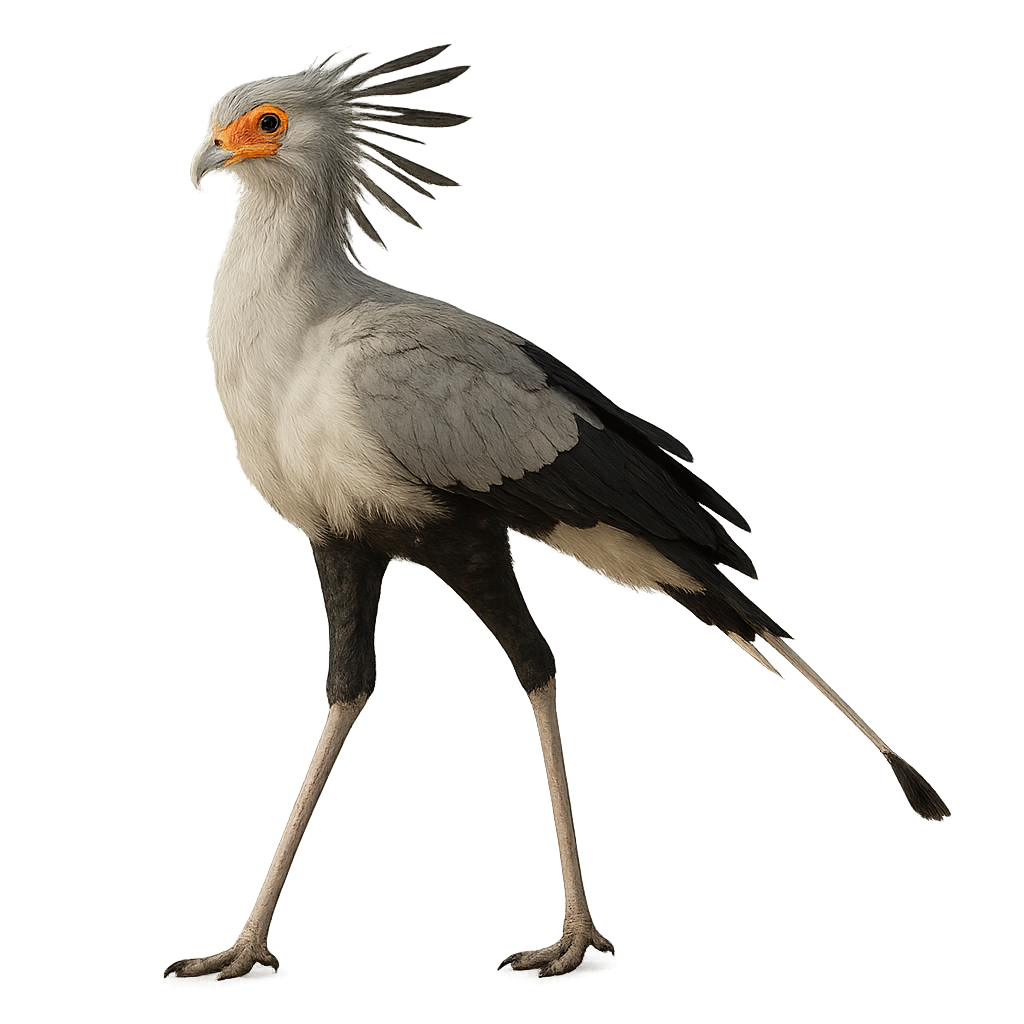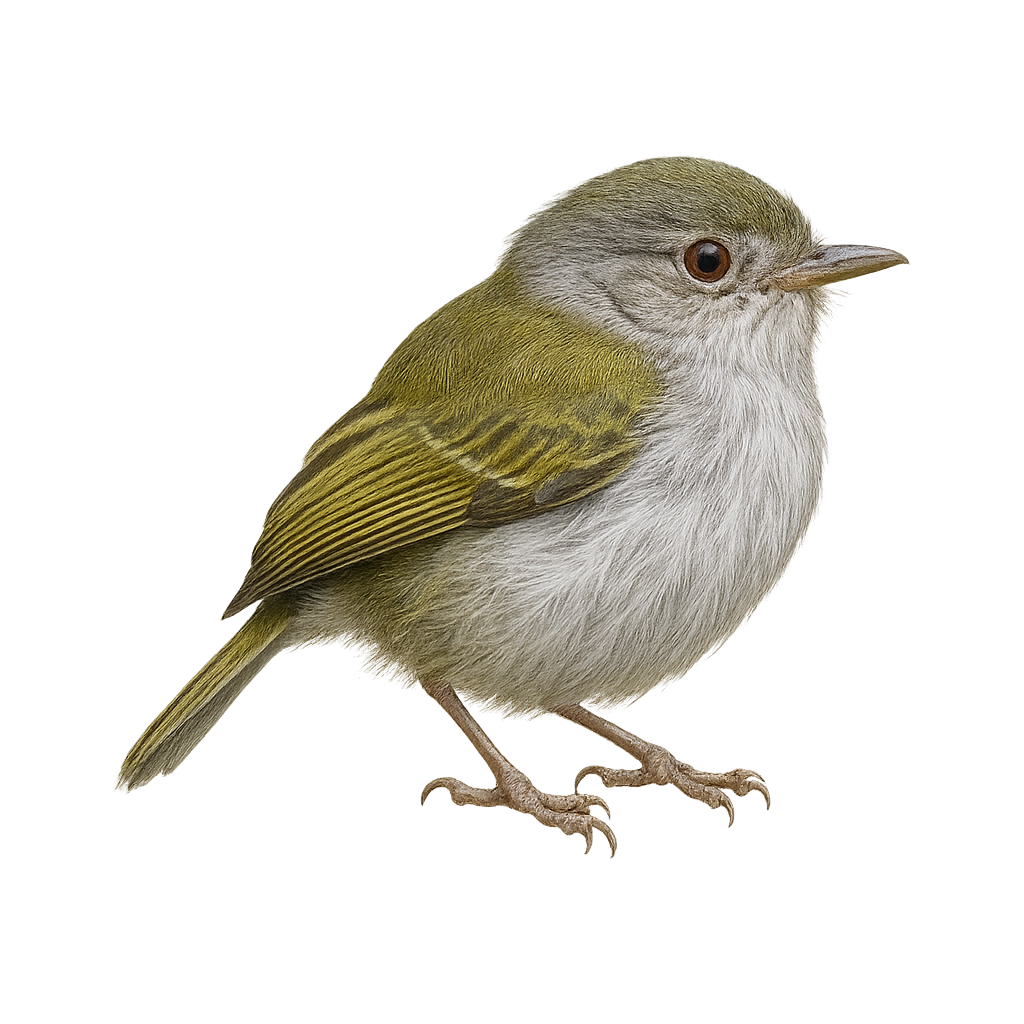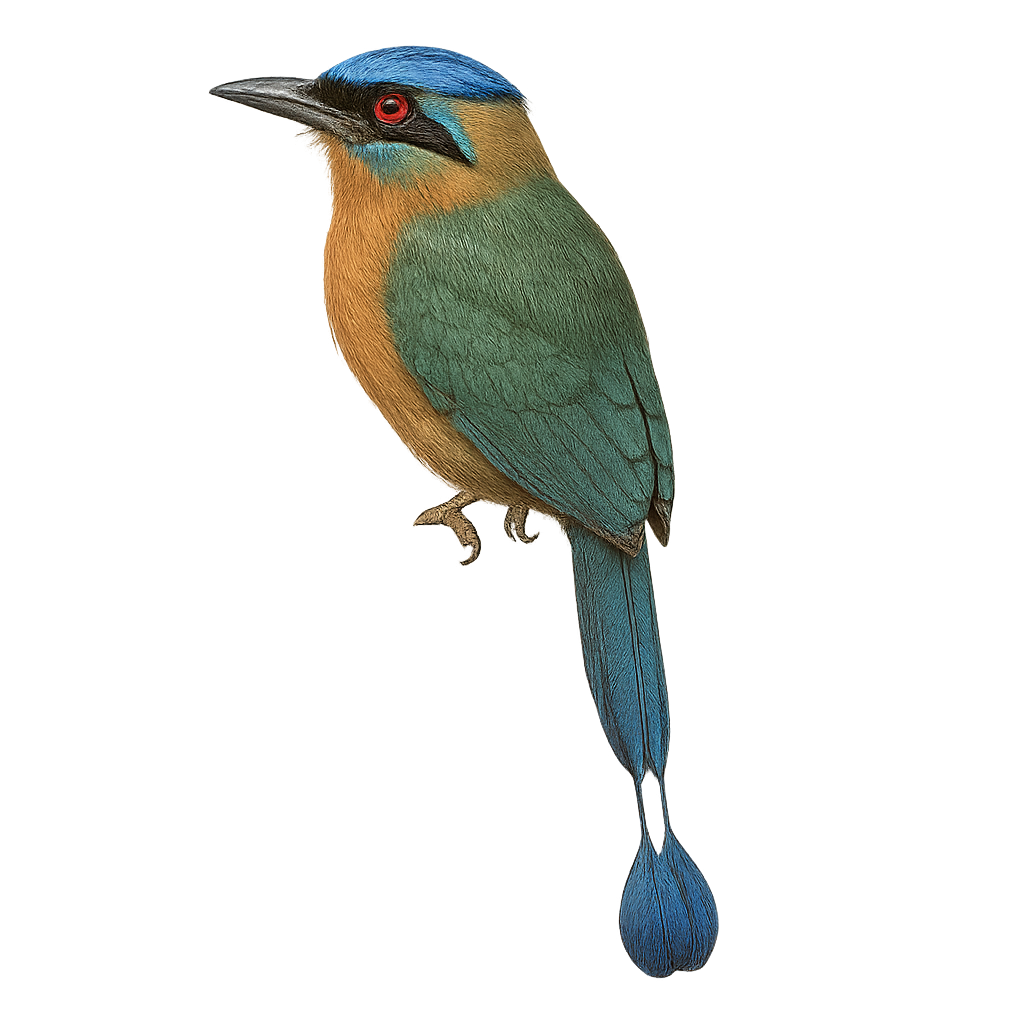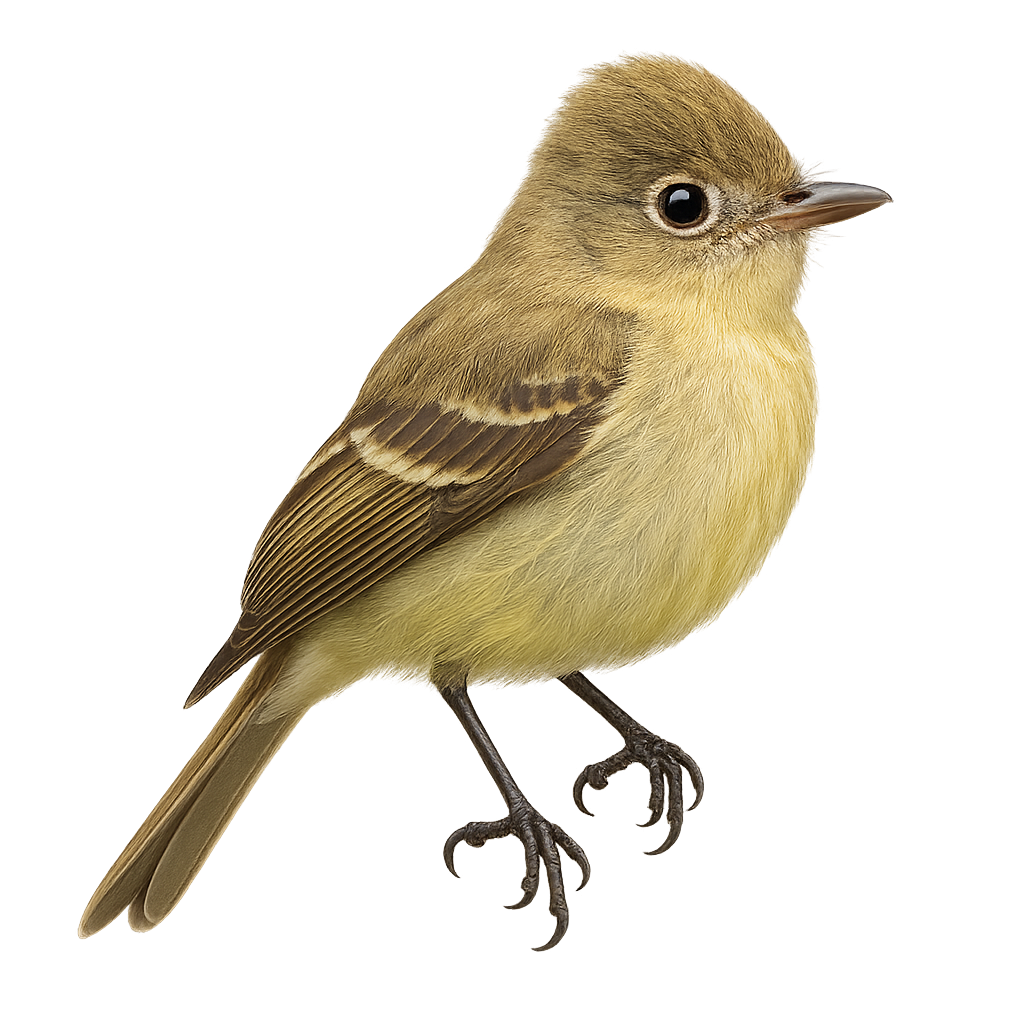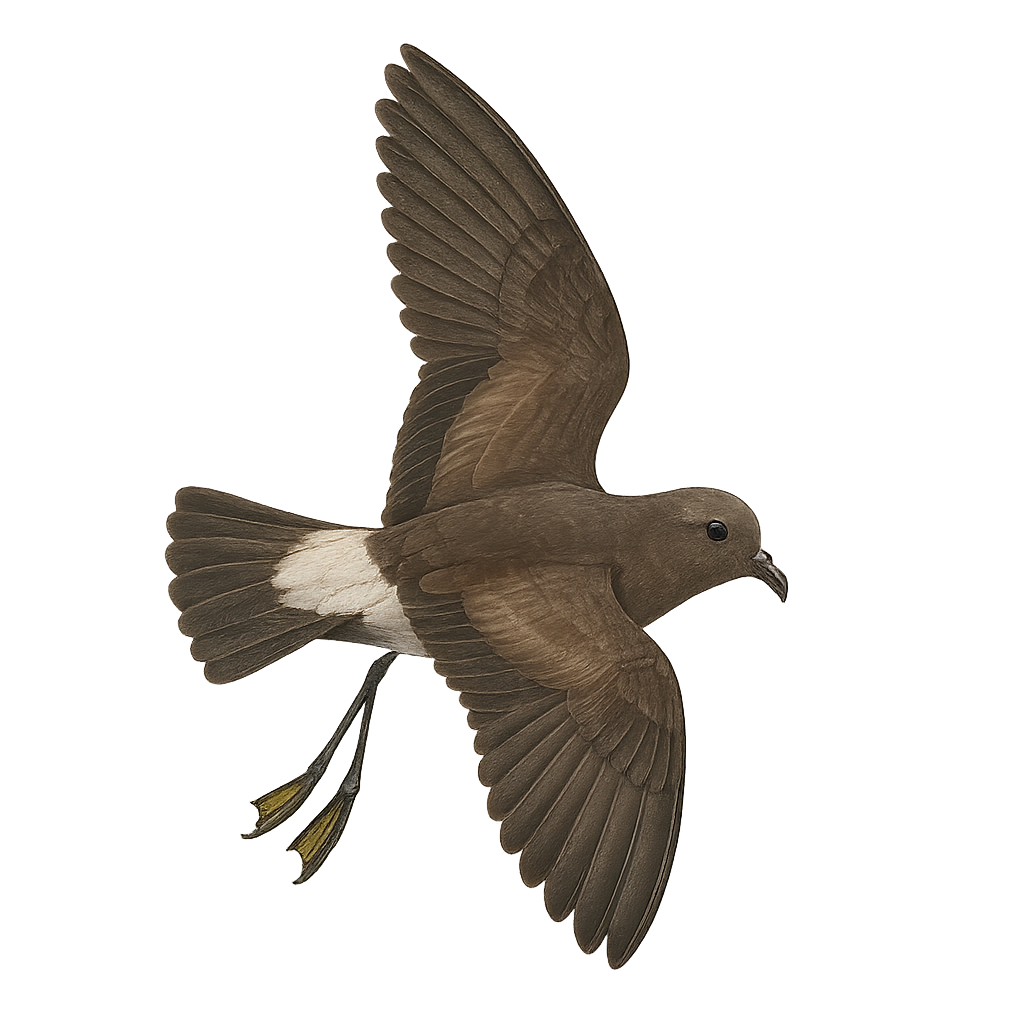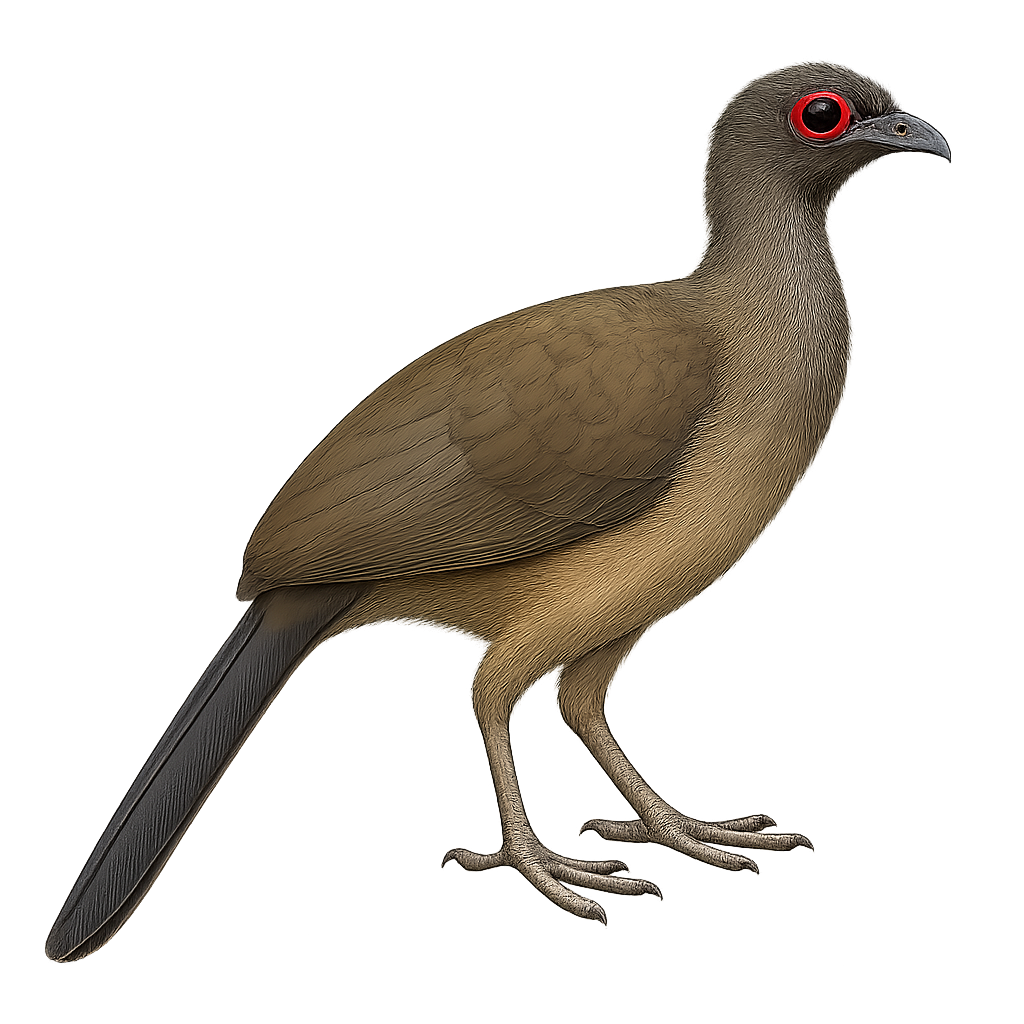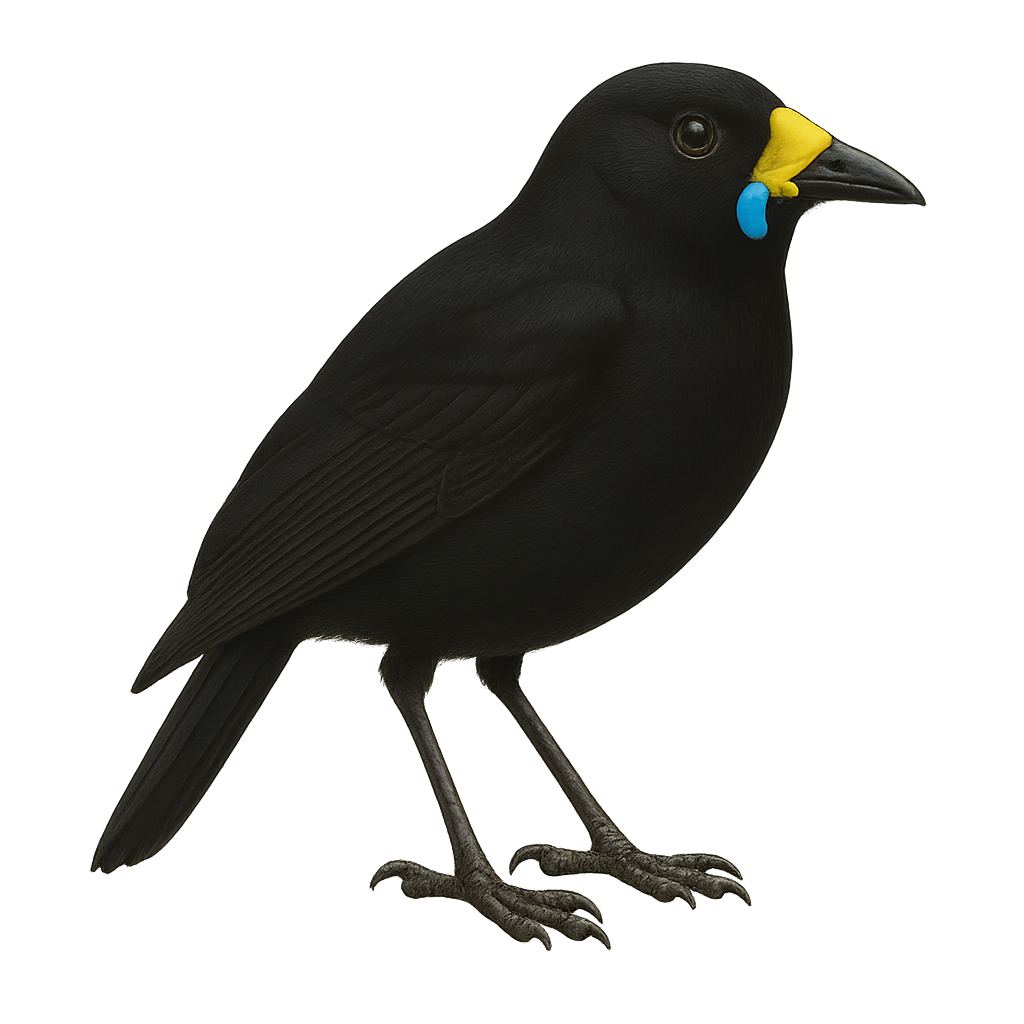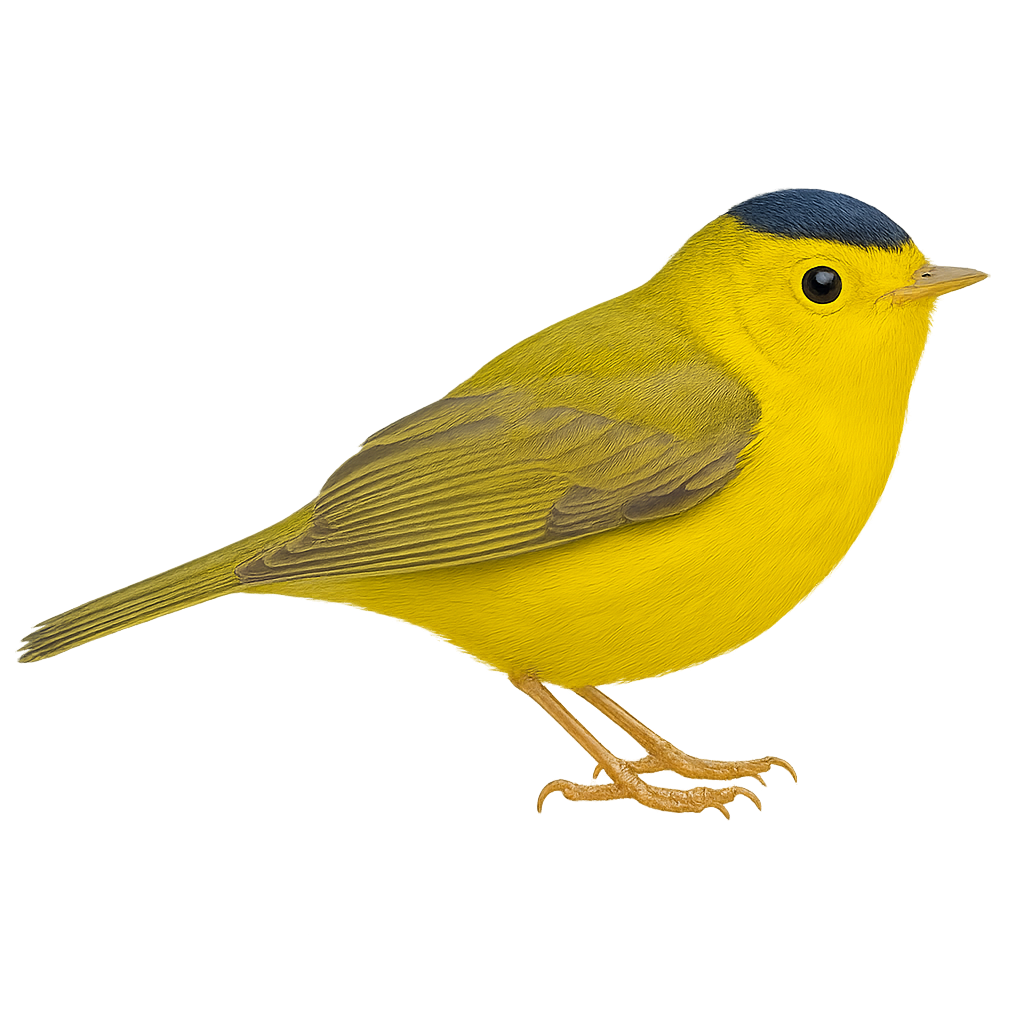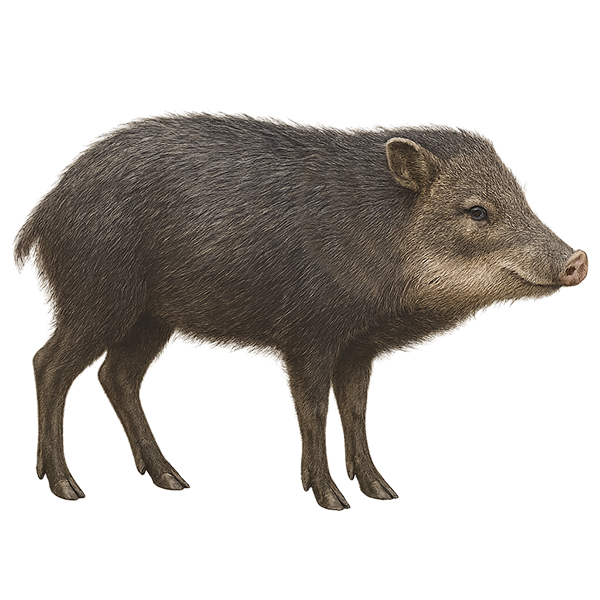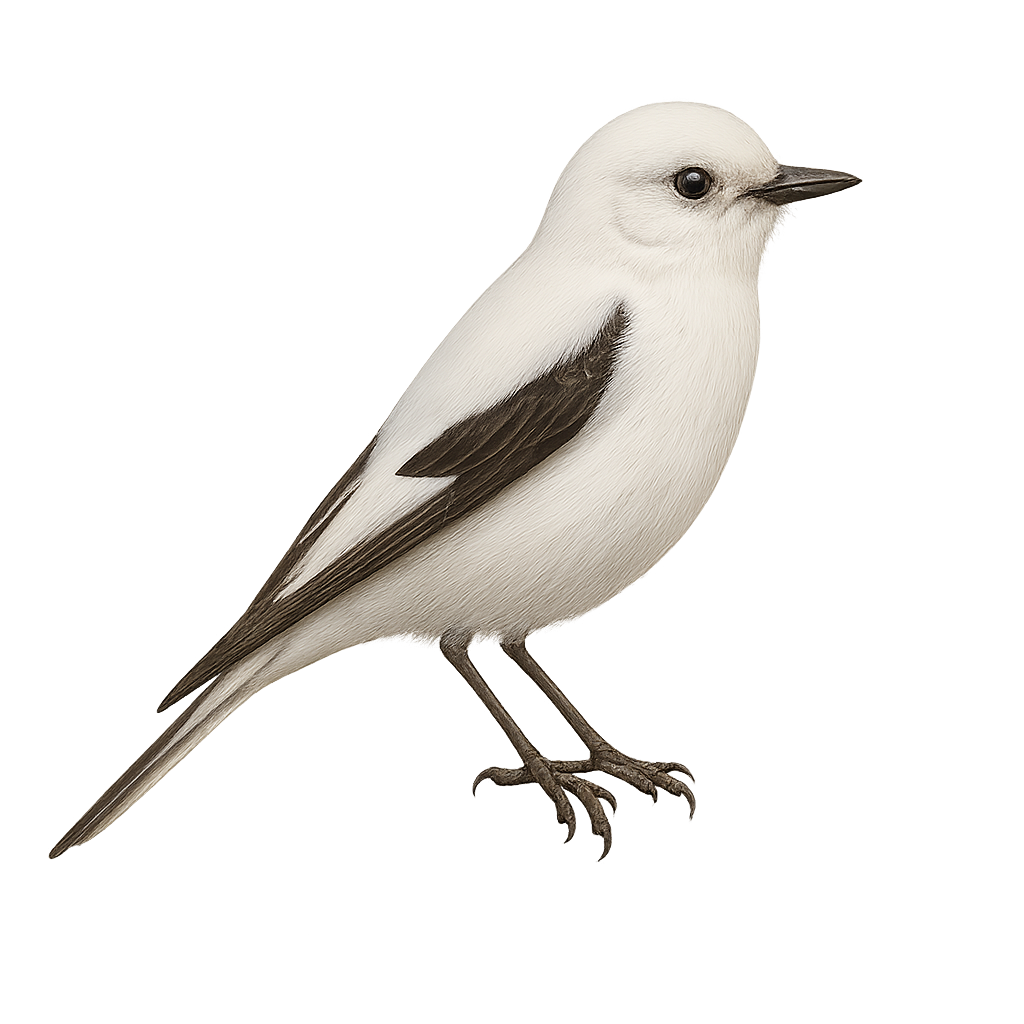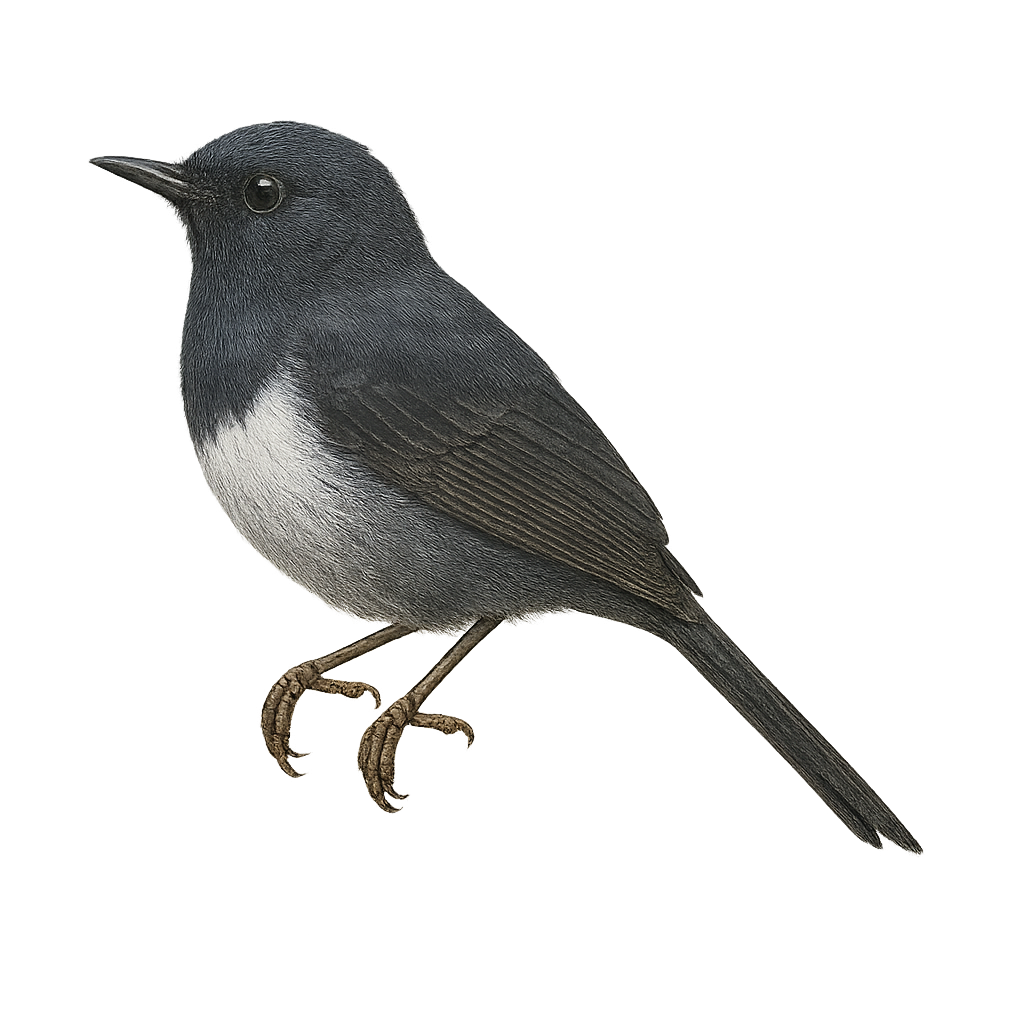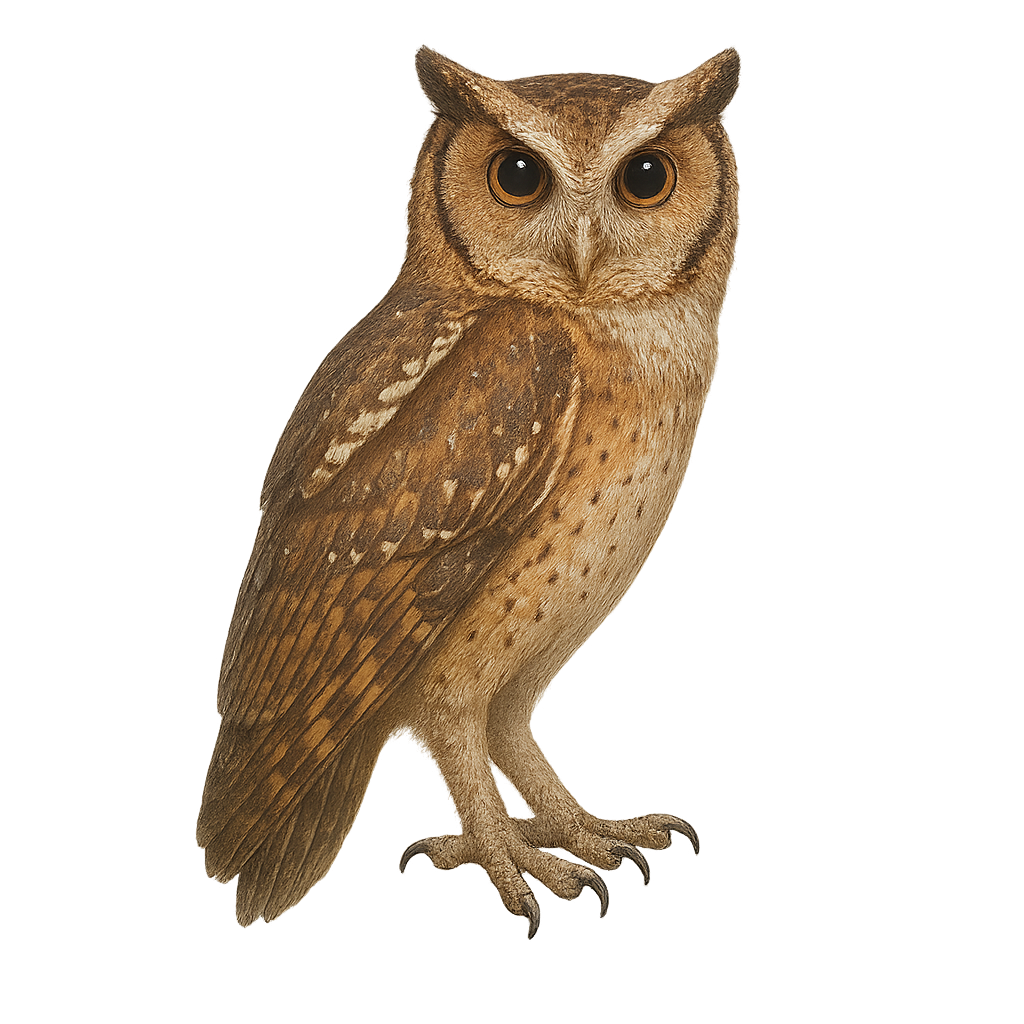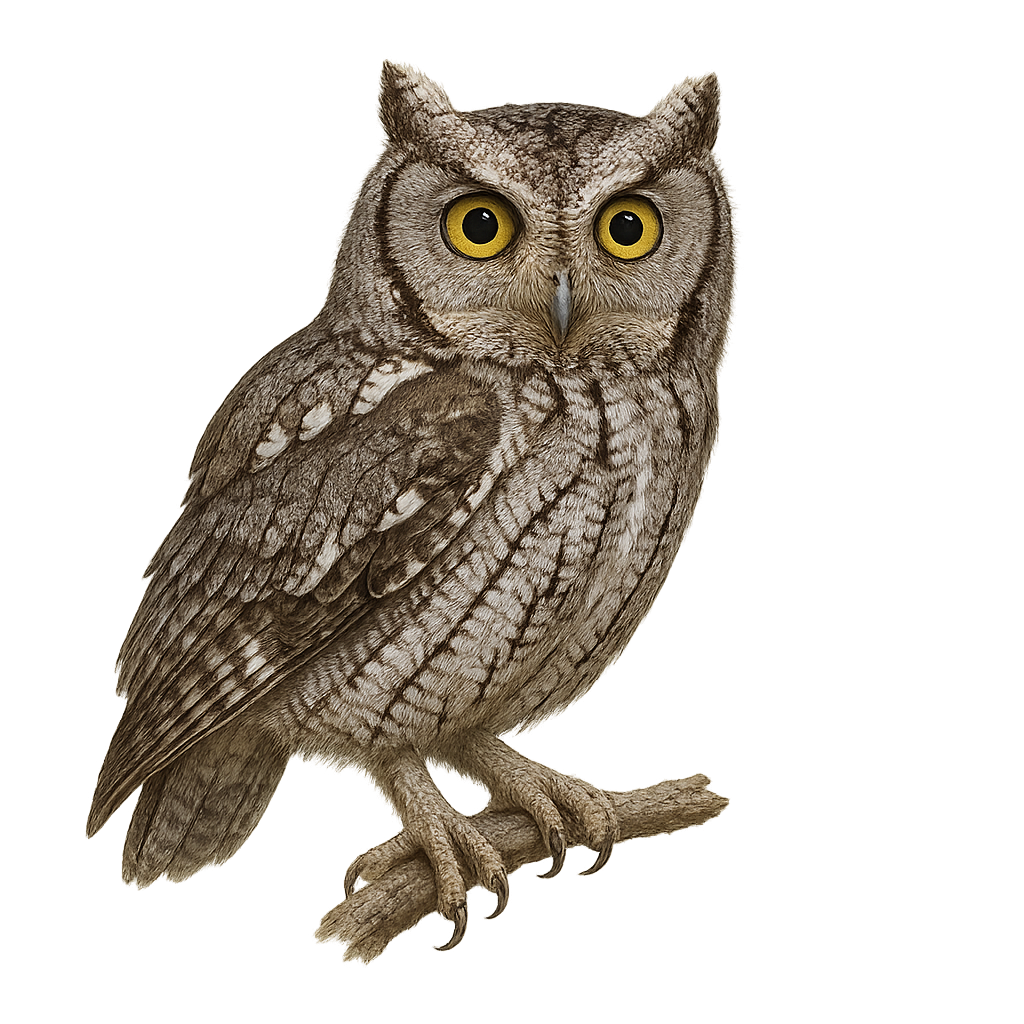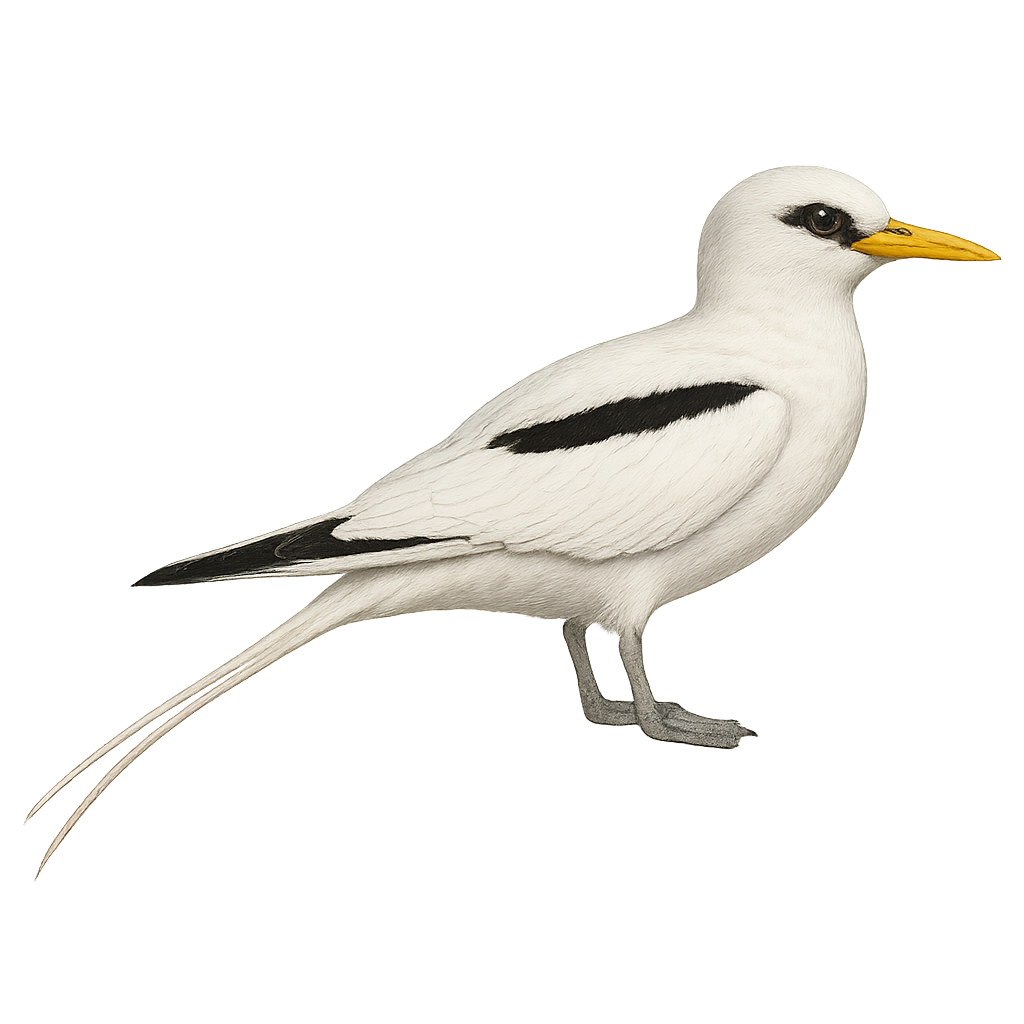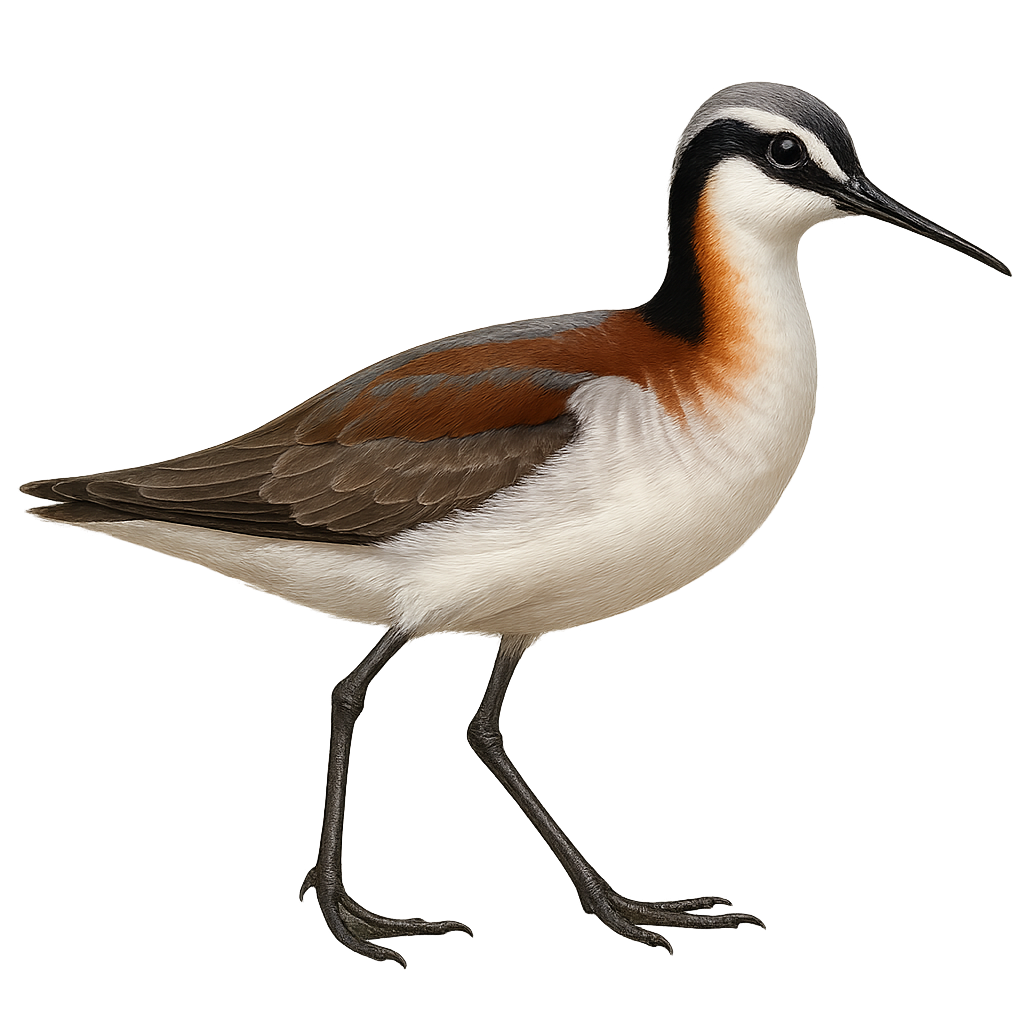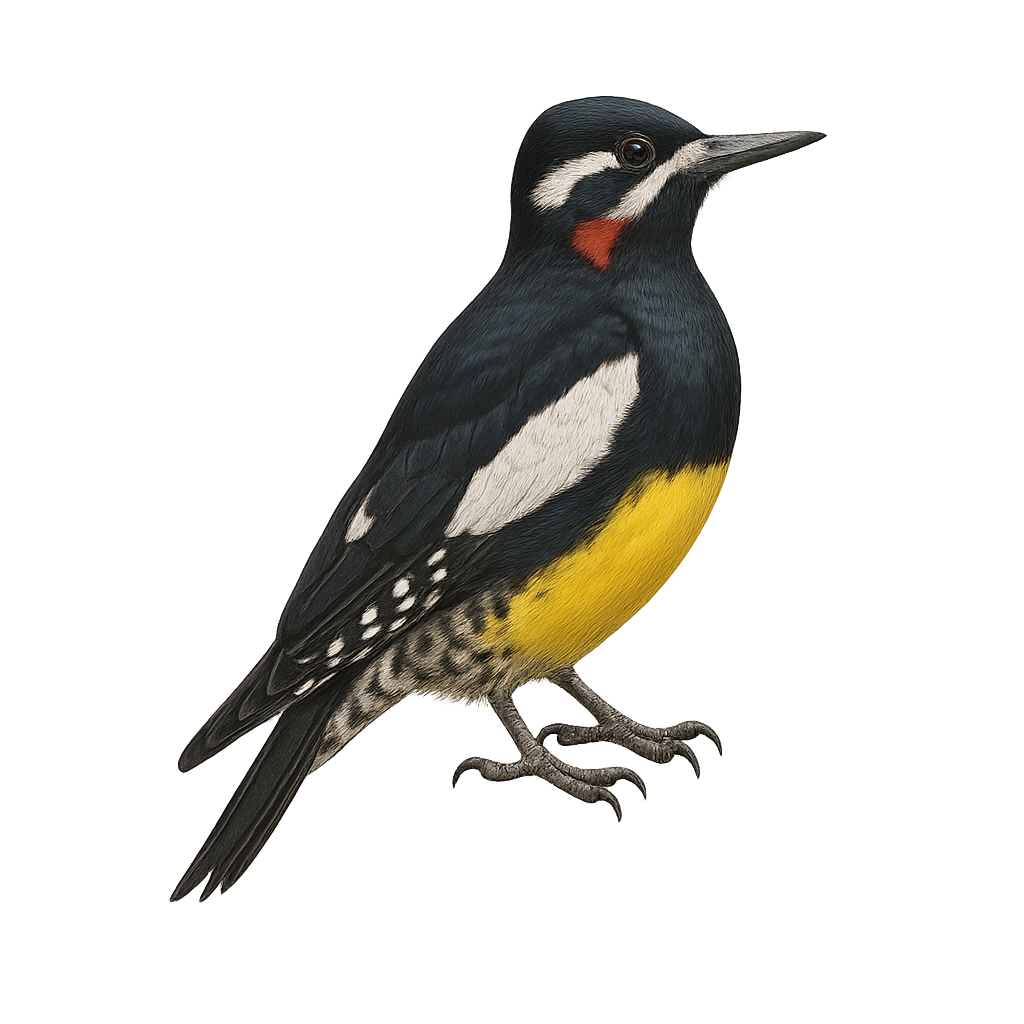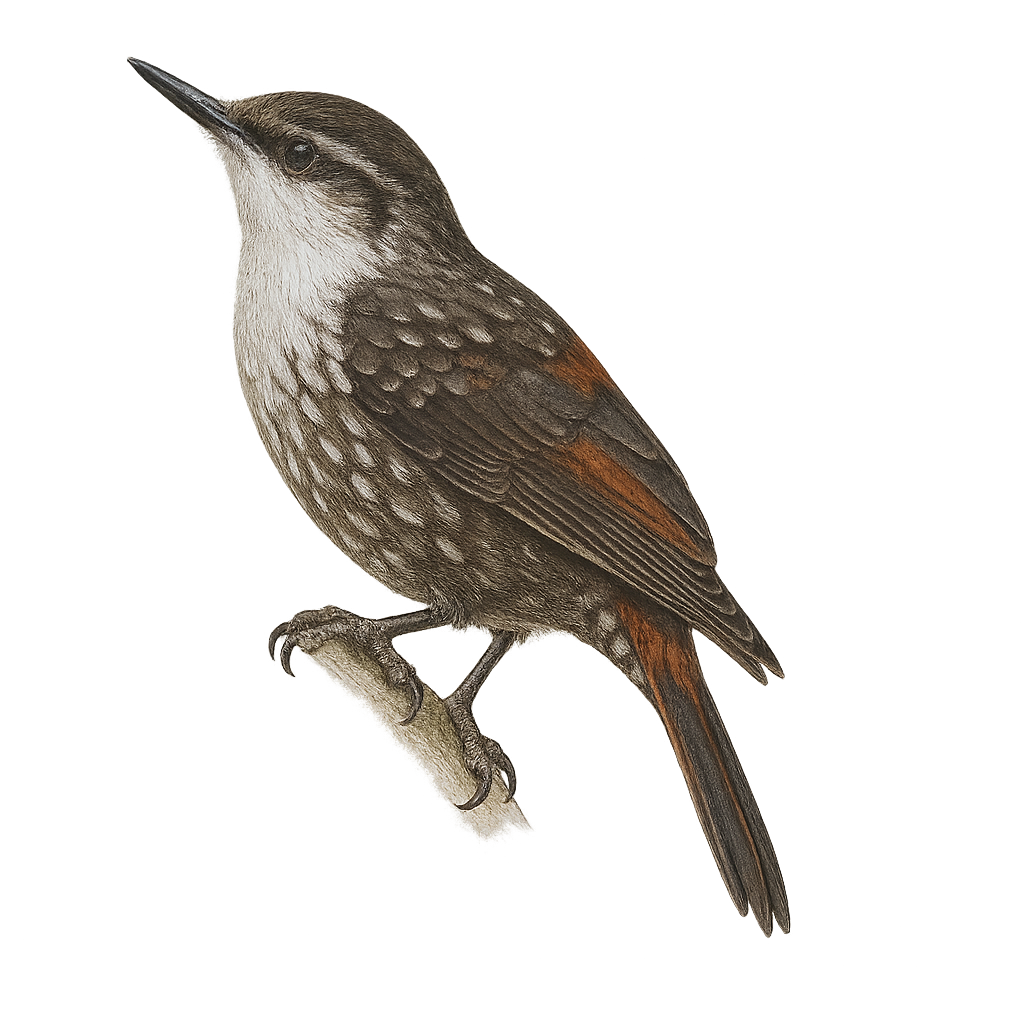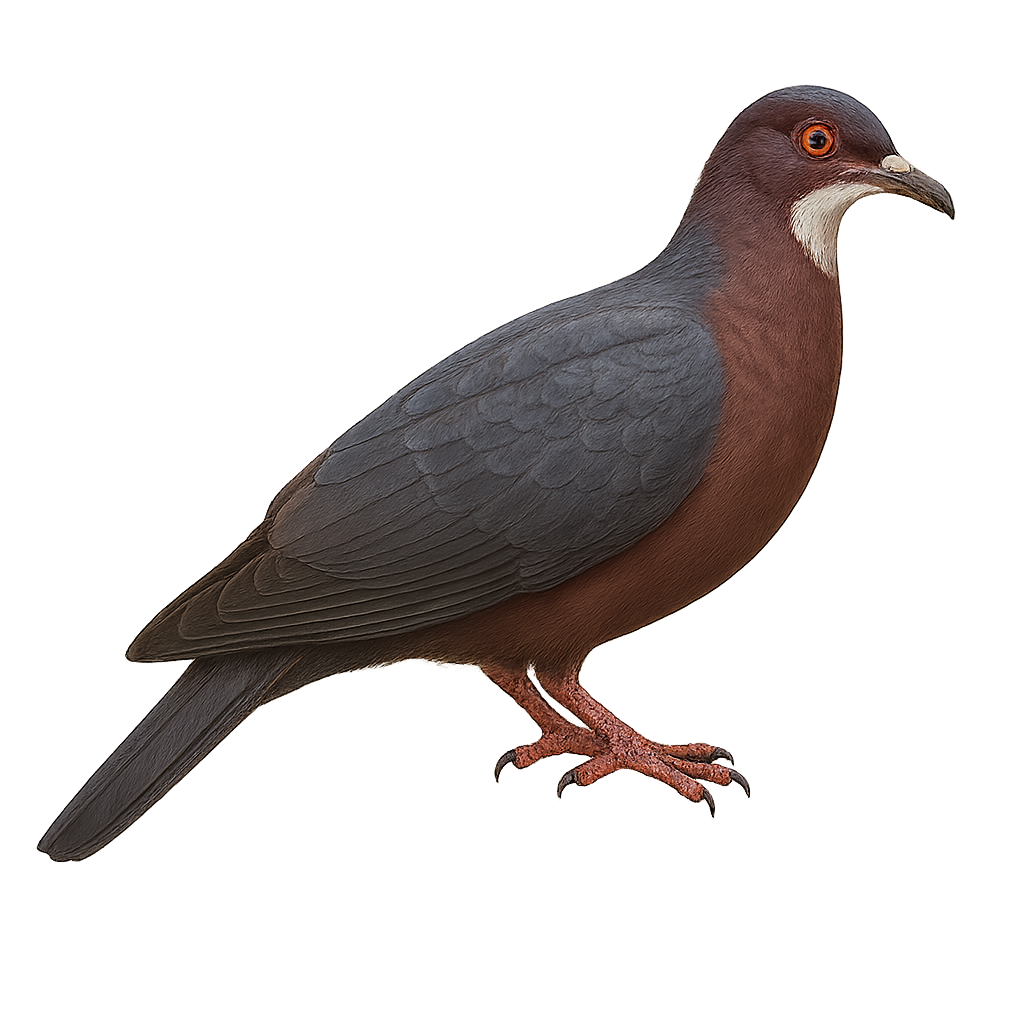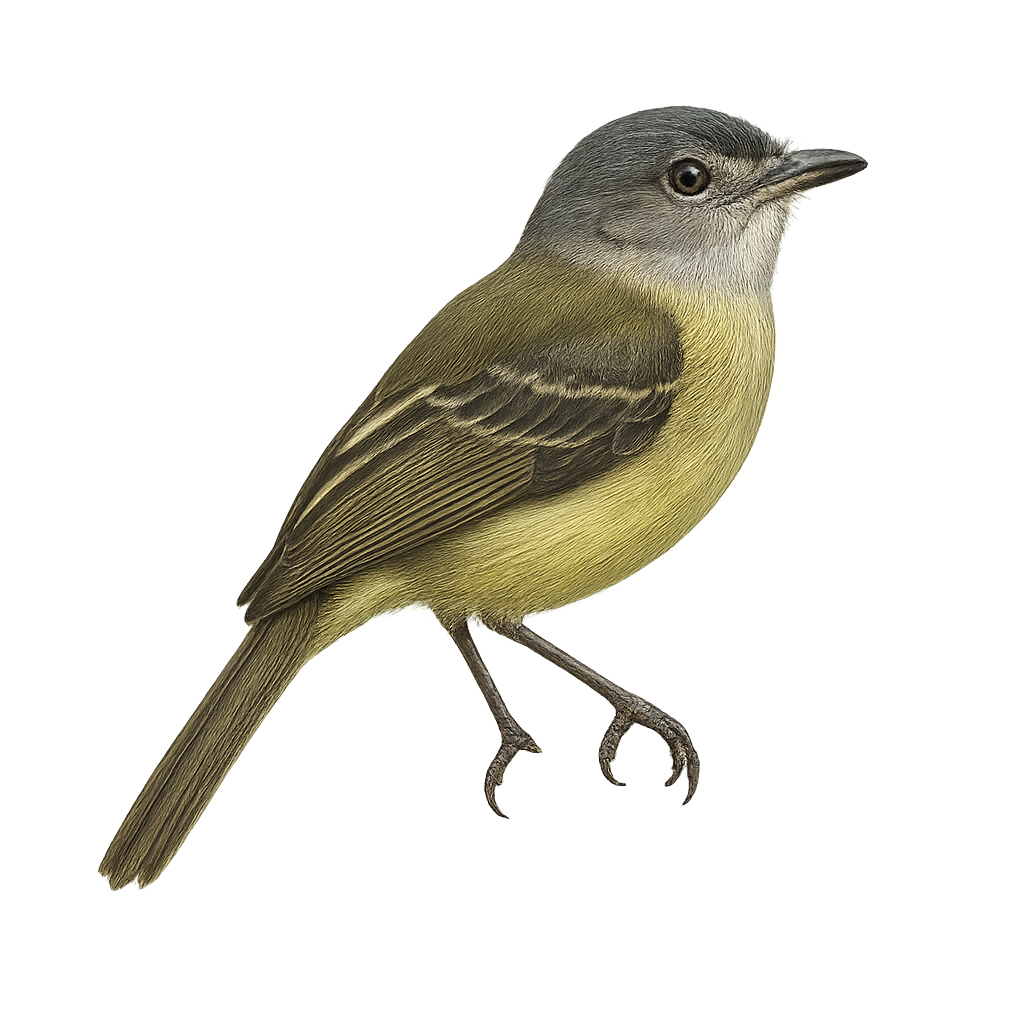The Wattled Honeyeater, or Foulehaio carunculatus, is a medium-sized bird belonging to the Meliphagidae family. It is primarily found in the South Pacific islands, notably in Fiji, Samoa, and Tonga. This bird is distinguished by its olive-green plumage and characteristic red wattles around its head. It mainly inhabits tropical rainforests but can also be seen in gardens and wooded areas. The Wattled Honeyeater primarily feeds on nectar but also consumes insects and fruits. Its song is a mix of whistles and chirps, often heard at dawn and dusk.
The Western Wattlebird, or Anthochaera lunulata, is a bird endemic to Australia, primarily found in wooded regions and open forests. It is distinguished by its brown-grey plumage with white crescent-shaped markings on the chest, hence its name. This bird is known for its loud and varied song, often heard before being seen. It primarily feeds on nectar but also consumes insects and fruits. The Western Wattlebird is a sociable bird, often observed in small groups. It plays a crucial role in pollinating local plants. Although generally tolerant of humans, it can become territorial during the breeding season.
The White-shouldered Black Tit, or Melaniparus guineensis, is a small passerine bird belonging to the Paridae family. It is primarily recognized for its distinctive black and white plumage, with a black head and a white patch on the shoulder, from which it derives its common English name. It mainly inhabits the savannas and open forests of West Africa, where it feeds on insects and seeds. This bird is often observed in small groups, displaying social and curious behavior. Although its habitat is relatively stable, it is sometimes threatened by deforestation and the loss of its natural habitat. The White-shouldered Black Tit is a diurnal bird, active mainly during the day, and is known for its melodious and varied songs.
The White-breasted Mesite, or Mesitornis variegatus, is an endemic bird of Madagascar, belonging to the Mesitornithidae family. It is characterized by its brown plumage speckled with white on the chest, providing excellent camouflage in its natural habitat. This terrestrial bird prefers dry forests and dense undergrowth, where it primarily feeds on insects and small invertebrates. Although capable of flight, it spends most of its time on the ground, moving nimbly through the vegetation. The White-breasted Mesite is a monogamous species, forming stable pairs. Its population is declining due to deforestation and hunting, classifying it as vulnerable by the IUCN.
The Sagittarius Hornbill, or Tockus alboterminatus, is a medium-sized bird primarily found in the savannas and open forests of Central and East Africa, notably in Kenya, Tanzania, and Uganda. It measures about 45 to 50 cm in length and weighs between 100 and 150 g. This bird is distinguished by its predominantly light gray and white plumage, with touches of black on the wings and tail, as well as a long, curved beak, characteristic of hornbills and messengers. Its name "sagittarius" comes from its beak, which resembles an arrow. The Sagittarius Hornbill primarily feeds on fruits, seeds, small insects, and small vertebrates. It is also known for its social behaviors and can be observed in small groups or pairs, and while less noisy than other hornbills, it emits distinct communication calls. The species is not currently endangered but may be affected by deforestation and loss of its natural habitat.
The Myiornis albiventris, or White-bellied Pygmy-Tyrant, is a tiny bird belonging to the Tyrannidae family. It is primarily found in the humid tropical forests of South America, particularly in Brazil and Bolivia. This bird is notable for its small size, measuring about 6.5 cm in length, making it one of the smallest birds in the world. Its plumage is mainly gray with a distinctive white belly, hence its name. It primarily feeds on insects, which it catches in flight. The White-bellied Pygmy-Tyrant is often difficult to spot due to its size and discreet behavior. It is usually solitary or seen in small family groups.
The Eurasian elk, known as the largest member of the deer family, is found mainly in Scandinavia, Eastern Europe, and across Russia to parts of northern Asia. It can grow up to 2 meters tall at the shoulder and weigh between 350 and 600 kg. Males are known for their broad, palmate antlers, which can span up to 1.8 meters. Their coat is usually dark brown to black, with a lighter belly and a small mane under the neck. This herbivore feeds on leaves, twigs, bark, fruits, and aquatic plants. A strong swimmer, it often forages in wetlands, lakes, and damp forests. Although populations are stable in some areas, the species remains vulnerable due to habitat fragmentation and hunting.
The Whooping Motmot is a fascinating bird, recognizable by its vibrant plumage and long racket-shaped tail. It displays colors ranging from emerald green to bright blue, with distinctive blue eyebrows. This bird is often seen in the tropical forests of Central and South America, where it primarily feeds on insects and small reptiles. It is known for its calm demeanor and ability to remain still for long periods, making it difficult to spot. The Whooping Motmot is also famous for its distinctive loud call that echoes through the dense canopy.
The Willow Flycatcher, or Empidonax traillii, is a small passerine bird belonging to the Tyrannidae family. It is primarily recognized for its distinctive song and its ability to blend into wooded and wet habitats. This bird measures about 13 to 15 cm in length with olive-green plumage on its back and a paler belly. It frequents willow areas and other shrubs near water, where it primarily feeds on insects. A migratory bird, it spends its summers in North America and migrates to the southern United States and Central America for the winter. Its population is stable, although some subspecies are threatened by habitat loss.
The Western Flycatcher, or Empidonax difficilis, is a small passerine bird belonging to the Tyrannidae family. It is primarily found along the western coast of North America, from southern Alaska to northern Mexico. This flycatcher is recognizable by its olive-green back and pale yellow belly, as well as its two white wing bars. It inhabits coniferous forests and moist wooded areas, where it primarily feeds on insects caught in flight. Its song is a key element in distinguishing it from other species in the Empidonax genus, as its appearance is very similar to its congeners.
The White-tailed Robin is a captivating bird, known for its striking appearance and intriguing behavior. It features a glossy blue-black plumage with a distinctive white tail, making it easily recognizable. This bird prefers dense, humid forests, often situated at higher altitudes. It is primarily insectivorous but can also feed on small fruits. The White-tailed Robin is a rather discreet bird, often seen alone or in pairs. It is known for its melodious song that echoes through the undergrowth. Although it is relatively tolerant of human presence, it remains cautious and prefers to keep its distance.
The Wilson's Storm Petrel is a small seabird belonging to the Hydrobatidae family. It is easily recognizable by its modest size, dark brown plumage, and distinctive white rump. This bird is an excellent flyer, capable of covering long distances over the oceans. It primarily feeds on plankton and small crustaceans, which it captures by flying close to the water's surface. The Wilson's Storm Petrel is a remarkable migrator, breeding in Antarctic regions during the austral summer and migrating to warmer northern hemisphere waters during the winter. Its ability to adapt to various oceanic conditions makes it a fascinating subject for ornithologists.
The West Mexican Chachalaca, scientifically known as Ortalis poliocephala, is a medium-sized bird belonging to the Cracidae family. It is primarily endemic to the tropical regions of Mexico. This bird is distinguished by its grey head contrasting with its olive-brown body. Chachalacas are often observed in noisy groups, feeding on fruits, leaves, and flowers in dry forests and wooded areas. They are known for their distinctive and loud call, often heard at dawn and dusk. Although they are relatively tolerant of human presence, they prefer dense habitats where they can easily hide. Their social behavior and adaptability to various habitats make them an interesting subject of study for ornithologists.
The Wattled Ploughbill, or Paradigalla carunculata, is a fascinating bird native to the mountainous forests of New Guinea. This member of the Paradisaeidae family is known for its distinctive facial wattles and glossy black plumage. Males display yellow and blue wattles, while females have more subdued plumage. These birds are often seen in pairs or small groups, primarily feeding on fruits and insects. Their behavior is generally suspicious, making them difficult to observe in their natural habitat. The Wattled Ploughbill plays an important role in the ecosystem as a pollinator and seed disperser, thus contributing to the biodiversity of its environment.
The Wilson's Warbler, scientifically known as Cardellina pusilla, is a small songbird with distinctive plumage. It is easily recognizable by its black cap contrasting with its bright yellow body. This species is primarily found in coniferous forests and moist wooded areas, where it feeds on insects and small invertebrates. A migratory bird, it spends its summers in the northern regions of North America and migrates south for the winter. The Wilson's Warbler is known for its melodious song and agile movements among branches. Although its habitat is threatened by deforestation, it remains relatively common and is often observed by birdwatching enthusiasts.
The white-lipped peccary, Tayassu pecari, is a medium-sized mammal belonging to the Tayassuidae family. It is characterized by its dark brown to black fur with a distinctive white band around its mouth. This peccary lives in social groups that can number up to several dozen individuals, which is essential for its survival against predators. It primarily inhabits the dense tropical forests of Central and South America, where it plays a crucial role in the ecosystem by dispersing seeds. An omnivore, it feeds on fruits, roots, insects, and small animals. Unfortunately, this species is threatened by deforestation and excessive hunting, leading to a significant decline in its population.
The Xolmis irupero, or White Monjita, is a passerine bird from the Tyrannidae family. It is primarily found in open regions of South America, particularly in Argentina, Brazil, Uruguay, and Paraguay. This bird is notable for its striking white plumage, contrasting with its reddish belly and black wings. It measures about 20 cm in length and has a sturdy beak suited for its insectivorous diet. The White Monjita is often seen perched on branches or power lines, from where it monitors its territory. Its song is a melodious whistle, often heard at dawn and dusk. Although relatively common, preserving its natural habitat is crucial for its survival.
The White-sided Flowerpiercer is a small passerine bird belonging to the Thraupidae family. It is primarily found in the mountainous regions of South America, particularly in Colombia, Ecuador, and Venezuela. This bird is notable for its dark plumage contrasted by distinctive white flanks. It has a thin, slightly curved beak, adapted to its specialized diet. It primarily feeds on nectar but also consumes insects and fruits. The White-sided Flowerpiercer is often seen piercing the bases of flowers to access nectar, a technique that earned it its name. It typically inhabits humid forests, forest edges, and shrublands at altitudes ranging from 1500 to 3000 meters.
The White-fronted Scops Owl, Otus sagittatus, is a medium-sized bird belonging to the Strigidae family. It is characterized by its prominent ear tufts and reddish-brown plumage speckled with white, allowing it to blend into its forest environment. This owl is primarily nocturnal and inhabits the tropical and subtropical forests of Southeast Asia, including Thailand, Malaysia, and Indonesia. It feeds mainly on small mammals, insects, and occasionally small birds. Although discreet, its melodious call can be heard at night. Habitat destruction poses a threat to its population, although it is not currently considered endangered.
The Western Screech-Owl, Megascops kennicottii, is a small nocturnal raptor belonging to the Strigidae family. It is primarily found in North America, especially in the wooded regions of the western United States and Canada. This owl is distinguished by its gray-brown mottled plumage, which allows it to blend seamlessly into its surroundings. Its piercing yellow eyes and subtle ear tufts are characteristic features. Known for its melodious and repetitive call, often heard at dusk, it is an opportunistic predator feeding mainly on small mammals, insects, and occasionally small birds. Its ability to adapt to various habitats, including urban areas, makes it a relatively common bird within its range.
The White-headed Petrel is a medium-sized seabird belonging to the Procellariidae family. It is characterized by its white head, contrasting with a grey body and dark wings. This bird is primarily pelagic, spending most of its life at sea and returning to land only to breed. It nests on subantarctic islands, digging burrows in the ground to lay a single egg. Its flight is graceful and swift, often seen gliding over the waves. Although its conservation status is currently of least concern, it remains vulnerable to introduced predators on its breeding sites.
The White-tailed Tropicbird, or Phaethon lepturus, is an elegant and graceful seabird, recognizable by its bright white plumage and long central tail feathers that form a ribbon-like tail. Its bill is a vivid yellow, contrasting with its black eyes and feet. It primarily inhabits tropical and subtropical waters, nesting on isolated islands where it finds refuge in cliffs and rocky crevices. This bird is an excellent glider, using air currents to move effortlessly over the ocean. It feeds mainly on fish and squid, which it captures by diving with precision. Although often solitary at sea, it gathers in colonies for nesting.
The Wilson's Phalarope, or Phalaropus tricolor, is an elegant and graceful bird belonging to the Scolopacidae family. It is easily recognizable by its distinctive plumage, with shades of gray, white, and brown, and its long, thin beak. This phalarope is unique for its reversed breeding behavior, where traditional roles are swapped: females are more colorful and court males, while males incubate the eggs and care for the young. It is primarily found in the wetlands of North America, where it feeds on small aquatic invertebrates. As a migratory bird, it travels long distances to reach its wintering grounds in South America.
The white-backed woodpecker is a medium-sized forest woodpecker of 22–25 cm, with black and white plumage featuring a broad white back and red crown in males. It inhabits old deciduous and mixed forests rich in dead wood, feeding on insects and larvae excavated from bark. During breeding, it excavates a nest cavity in an old tree and the male drums to attract the female and defend territory.
The Williamson's Sapsucker, or Sphyrapicus thyroideus, is a fascinating bird from the Picidae family, primarily found in the coniferous forests of western North America. This woodpecker measures about 20 to 22 cm in length and exhibits marked sexual dimorphism: the male sports a distinctive black head, while the female is duller with brown and white patterns. They primarily feed on tree sap, which they extract by drilling holes in the bark, as well as insects and fruits. Their call is a mix of trills and drumming. Although their population is stable, they are sensitive to deforestation and habitat loss.
The Pygarrhichas albogularis, known as the White-throated Treerunner, is a bird endemic to the temperate forests of southern South America, particularly in Chile and Argentina. This small bird, about 15 cm long, is distinguished by its white throat contrasting with its reddish-brown plumage. It is often seen climbing tree trunks in search of insects and spiders, which it captures with its thin, slightly curved beak. Its behavior is generally suspicious, making it difficult to approach. It is primarily active during the day, exploring Nothofagus forests and humid wooded areas. Although not threatened, it is important to preserve its natural habitat to ensure its survival.
The White-throated Pigeon, or Columba vitiensis, is a medium-sized bird, measuring approximately 37 to 40 cm in length. It is distinguished by its white throat contrasting with its generally gray-blue plumage. The wings and tail are darker, and it has a slightly iridescent sheen on the neck. This bird is primarily arboreal, living in tropical and subtropical forests. It feeds mainly on fruits, seeds, and berries. The White-throated Pigeon is often observed alone or in small groups. It is widespread in the Pacific islands, notably in Fiji, Samoa, and New Caledonia. Although not considered threatened, deforestation poses a potential risk to its natural habitat.
The Western Wood-Pewee, Contopus sordidulus, is a small passerine bird in the Tyrannidae family. It is primarily found in coniferous and mixed forests of North America, particularly in the mountainous regions of the western United States and Canada. This bird is easily recognizable by its gray-brown plumage, lighter belly, and slightly darker wings. It feeds mainly on insects, which it catches in flight thanks to its aerial hunting skills. The Western Wood-Pewee is a migratory bird, spending its winters in Central and South America. Its song is a melodious and repetitive whistle, often heard at dusk. Although relatively discreet, it plays an important role in controlling insect populations in its natural habitat.
The White-browed Flycatcher is a small bird from the Tyrannidae family, primarily found in the humid tropical forests of South America. It is characterized by its olive plumage on the back and white on the belly, with a distinctive white stripe above the eye. This passerine is often seen catching insects in flight, thanks to its agile and swift movements. It prefers dense undergrowth where it can easily hide. Although discreet, its melodious and repetitive song often reveals its presence. It plays an important role in the ecosystem by regulating insect populations.
The Western Tanager, or Piranga ludoviciana, is a colorful bird found mainly in North America. Males display a bright red head, vibrant yellow body, and black wings with white bars, while females have softer shades of yellow and olive. This migratory bird inhabits coniferous forests and wooded areas during the breeding season, then migrates south for the winter. It primarily feeds on insects and fruits, catching them in flight or foraging through foliage. The Western Tanager's song is melodious, consisting of short, varied phrases. Although its habitat is threatened by deforestation, the species is currently listed as of least concern by the IUCN.


